
Lunar rover: SLIM successfully makes pinpoint landing
・JAXA releases SLIM images for the first time
・Photographed by Takara Tomy’s SORA-Q
We will provide you with a summary of articles published in the Nikkei Shimbun.

Japan Aerospace Exploration Agency: (JAXA)
On January 25th, the lunar probe SLIM successfully made a “pinpoint landing” within 100 meters of its target location.
Publish SLIM image:
A SLIM image obtained by two small robots working together was also released.
All of these results are world firsts, and will be a strength for Japan in future resource exploration.
SLIM was held in the early hours of the 20th for the first time in Japan. It became the fifth country in the world to successfully land on the moon.

Photographed by two small robots
Two small robots released by SLIM onto the lunar surface just before landing.
It is still working properly. SLIM images were delivered to Earth.

Photographed by Takara Tomy SORA-Q:
The photo was taken by the ultra-compact robot LEV2 (SORA-Q) developed by Takara Tomy and the Sony Group.
1. SORA-Q weighs 250 grams and is about the size of a baseball.
2. LEV1 sent the image data received from LEV2 to Earth.
Takara Tomy has become a new space business player.
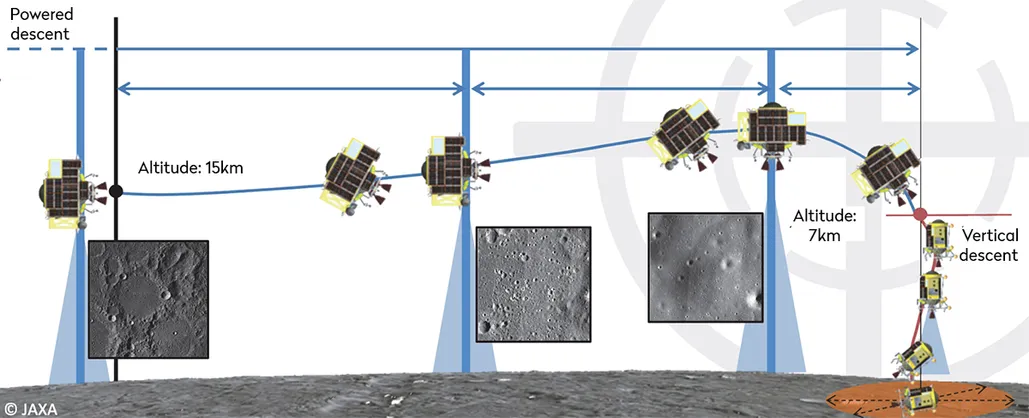
World’s first pinpoint landing:
In conventional lunar exploration, it was common knowledge that the distance was several kilometers to more than ten kilometers.
SLIM reduced the target point error to within 100 meters.
Technology to land on the moon with high precision:
“Technology in which the spacecraft makes its own decisions, rather than remote control” is essential.
1. SLIM landed 55 meters from the target.
2. There were obstacles at the landing site, but they were automatically avoided.

JAXA:Sakai Project Manager
How pinpoint landing works:
In the pinpoint landing, it demonstrated its ability as designed.
Before avoiding obstacles, it had achieved ‘accuracy within 10 meters of the target’.
1. A technology that compares images of the moon’s surface with a map of the moon.
2. Technology that instantly determines the location and controls the aircraft.

SLIM lands handstand:
SLIM was supposed to face up after landing, but it landed upside down.
1. It landed with its main engines pointing up, and its solar cells facing west.
2. The solar cells face west (a different direction than expected) and are in the shade.
While descending from an altitude of 15km, an abnormality occurred at around 50m altitude.
3. An abnormality occurred in one of the two main engines.
4. As a result, he collapsed on his own like a judo player.
In the end, it was not possible to demonstrate a ”two-stage landing,” which is a safe landing on a slope.
Waiting for solar battery recovery:
We will wait for the direction of the sun to change and for the solar cells to recover.

Contributing to the ARTEMIS project:
Pinpoint landing technology will have a major impact on the ARTEMIS program.
Is there enough water on the moon?
Is it abundant around Antarctica?
The United States will send unmanned probes in 2024, and Japan and India in 2025.
https://www.nikkei.com/article/DGXZQOUC253Z70V20C24A1000000/

JAXA: SLIM successfully makes pinpoint landing
We will provide you with a summary of articles published on NHK.
JAXA press conference:
On January 25th, JAXA held a press conference in Tokyo.
1. “Pinpoint landing” on the moon with an error of less than 100 meters
2. Landed 55m east of the landing target point.
Previously, it was common knowledge around the world that the error was on the order of several kilometers.
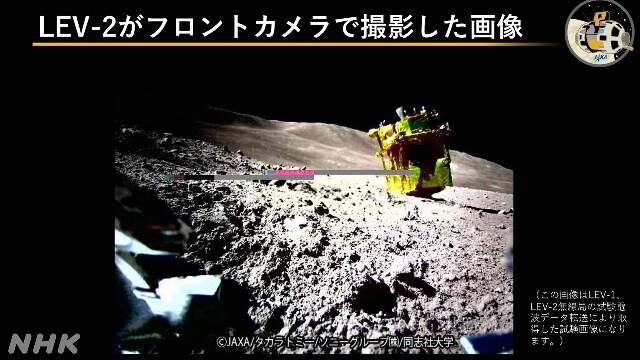
SORA-Q shoots SLIM:
The two small exploration robots functioned normally.
An exploration robot took a photo of the SLIM aircraft.
1. The main engine is facing upwards, almost vertically.
2. A solar panel is mounted on the right side of SLIM.
Lunar landscape during moon landing:
The silver objects visible at both ends are the left and right wheels of “LEV-2.”
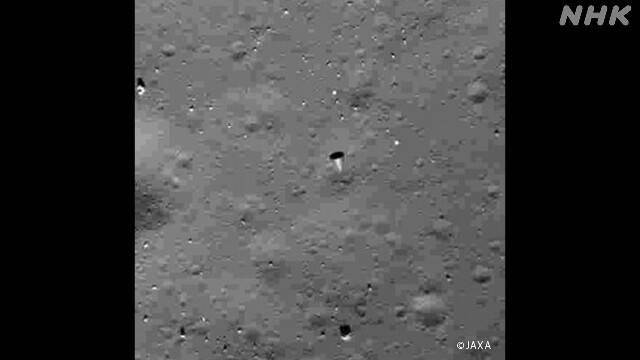
Cone-shaped object in the center of the image:
“SLIM” photographed the lunar surface from an altitude of around 50 meters.
A cone-shaped object appears near the center of the image.
This is the nozzle part of the main engine that fell from the SLIM just before landing.
It was discovered that one engine was lost at an altitude of 50 meters just before landing.
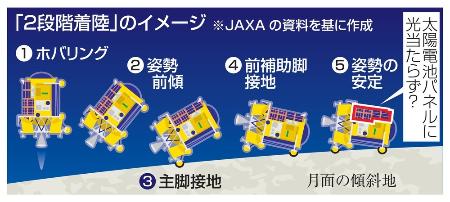
Unable to use solar power:
Sunlight does not shine on the installed solar cells. The spacecraft is currently unable to generate electricity.
In the future, if sunlight hits the solar cells, it may be possible to generate electricity.
It will generate electricity if sunlight hits it by the moon’s sunset (around February 1st).
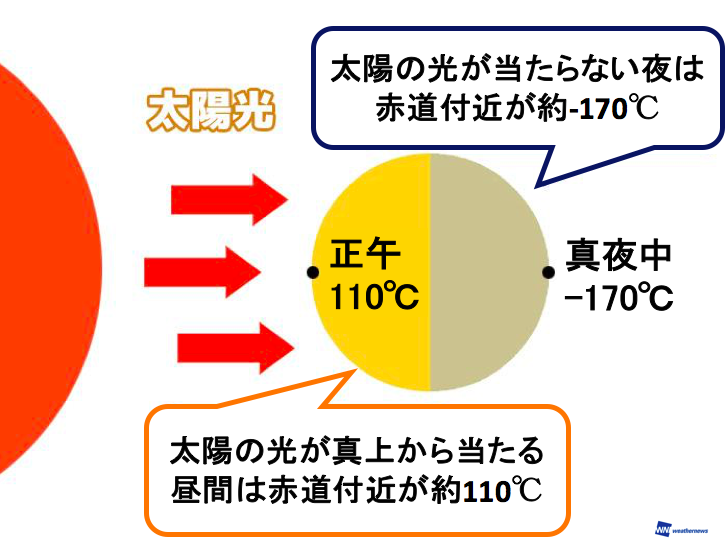
Lunar day and night cycle:
On the moon, day and night cycles occur every two weeks.
Sunset occurs around February 1st.
Once power is restored, the spacecraft will automatically start up and resume operations.
Observable once power is restored:
We will carry out observations to photograph the moon’s surface, investigate the composition of rocks, and explore the origin of the moon.
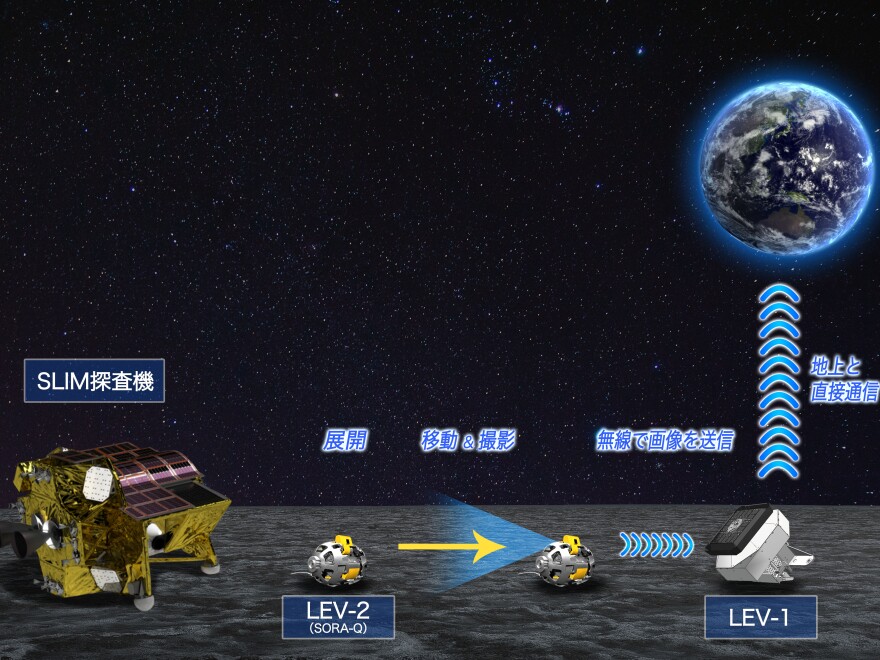
Takara Tomy: Comment from Chairman Kantaro Toyama
I am very happy that SORA-Q was able to contribute to the pinpoint landing mission.
SORA-Q is now Japan’s first robot to land on the moon and take pictures.
This will give children around the world an opportunity to become interested in science.
https://www3.nhk.or.jp/news/html/20240125/k10014333951000.html